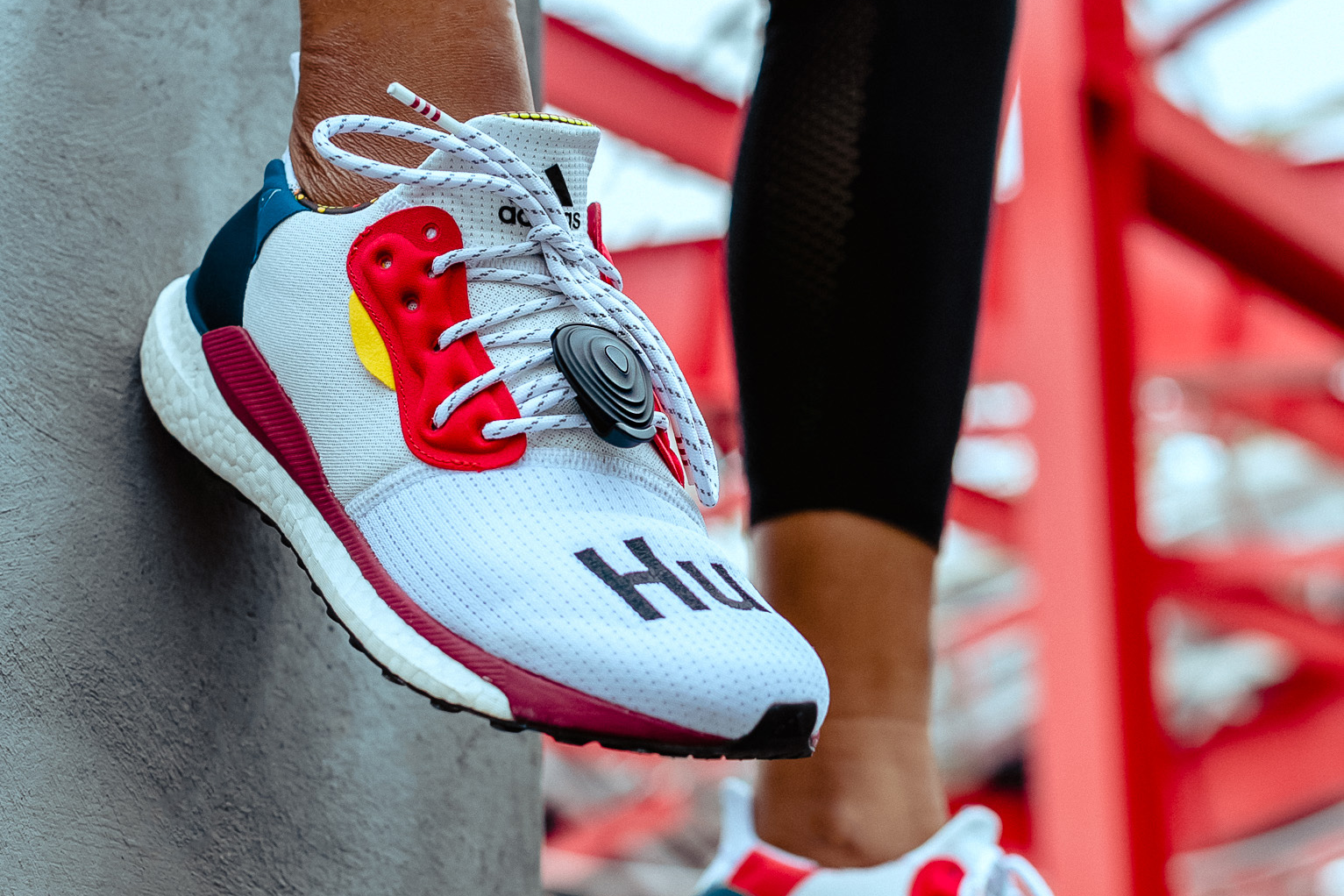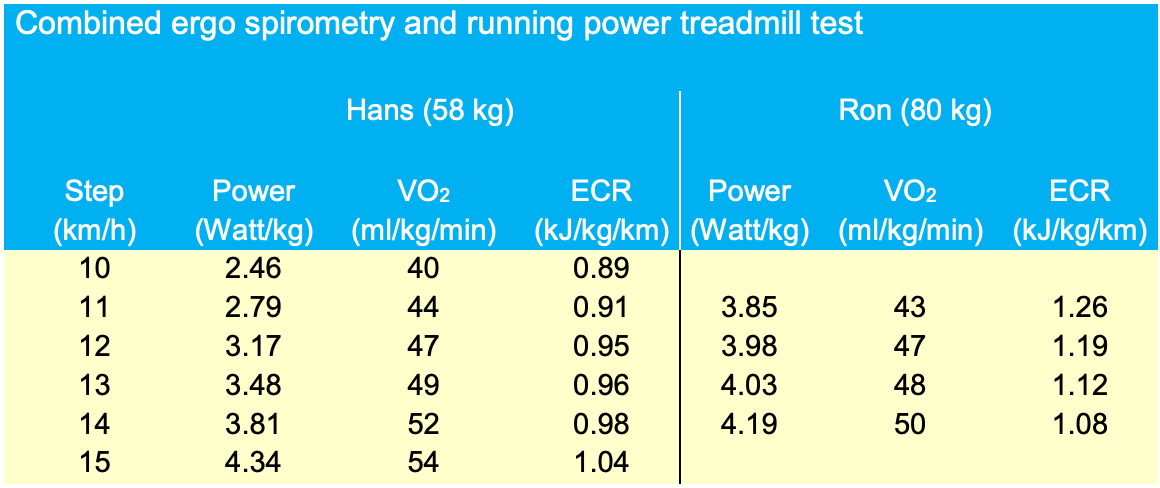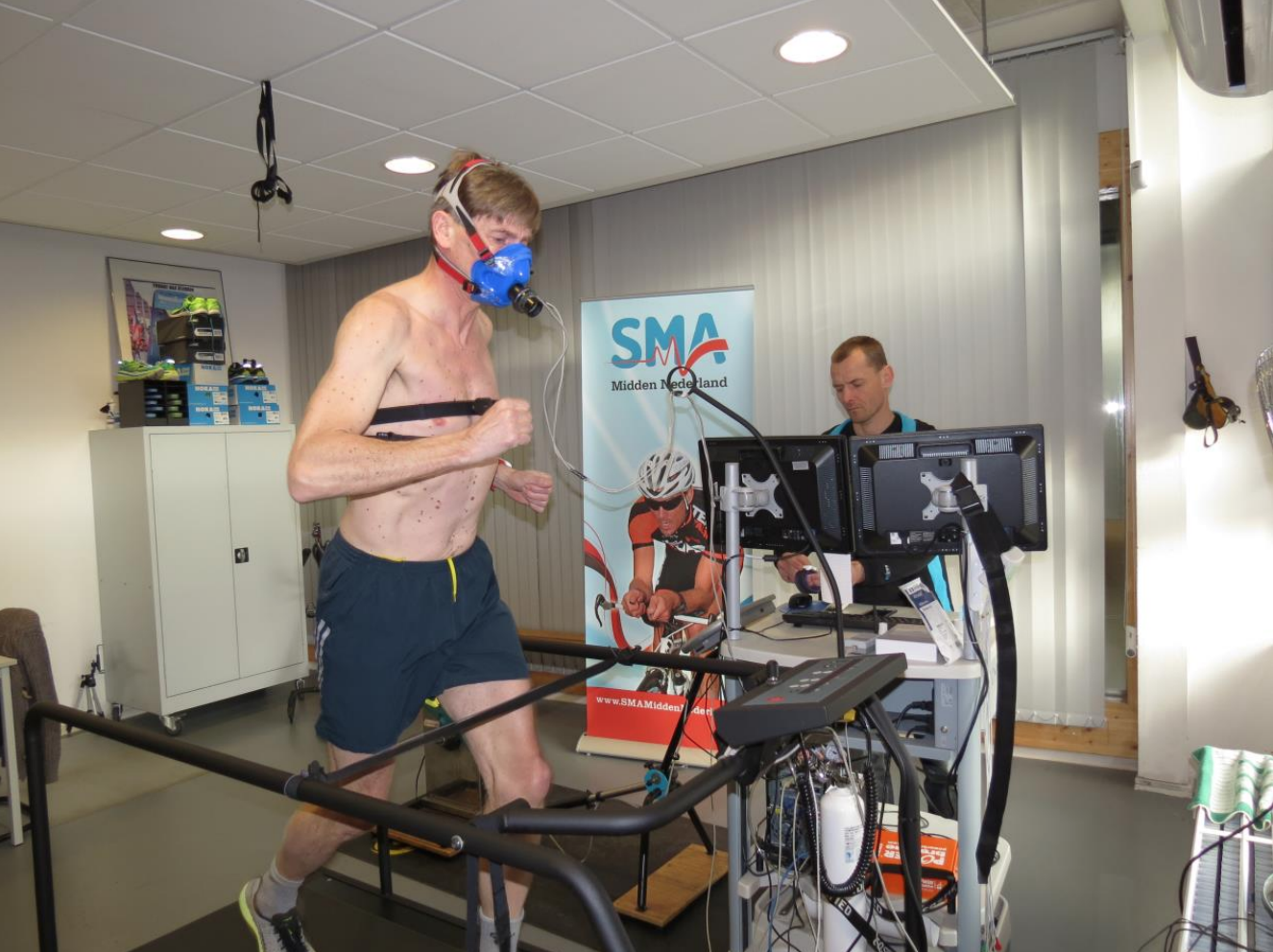Testing Stryd in the laboratory

The performance lab of a Sports Medical Center offers various tests. In this paper we elaborate the testing of the aerobic system of a runner on a treadmill. To test the aerobic system the load is step-by-step increased by increasing the speed of the treadmill. Such a test goes beyond your anaerobic threshold until you (nearly) reach your maximum effort level. This is called the threshold test. This test provides an accurate assessment of your threshold speed, threshold heart rate and even threshold power.
Threshold Test
In this test ergo spirometry is used to determine the threshold accurately. In addition to the HR and blood pressure, the composition of the exhaled air is measured breath-by-breath, including the concentrations of oxygen (O2) and carbon dioxide (CO2). The software generates various graphs that show how the energy production in the body develops. During this test various parameters are determined which provide information on your physical fitness. With this information specific individual limitations can be diagnosed. Also training schedules and training advice can be optimized.
Protocol Threshold Test
In order to ensure that the body gets the opportunity to reach a new equilibrium at the next step, the duration of a step should be sufficiently long. A 3-minute step length is suitable, shorter steps are not advised. The starting speed or pace is determined based on previous performances of the runner. It should be at least 5 km/h slower than the 10K race speed. Each step the speed is increased by 1 km/h. Once the anaerobic threshold has been reached, the duration of the steps are reduced to one minute until the maximum speed is reached. Take care that the runner does not stumble or fall at the maximum speed. A special harness may improve safety.
Which parameters are measured?
Ventilation: The ventilation is the volume of exhaled air (VE) in 1 minute. The VE is calculated from the number of breaths per minute, the respiratory rate or frequency (Rf), and the volume per breath, the Tidal Volume (TV).
VE = Rf*TV
At rest the Rf is about 10 - 12 times per minute and the TV is about 500 - 1000 ml. Thus, the VE at rest is about 5 to 10 l/min. During maximal effort the respiratory rate Rf may increase to 60 - 70/min and the TV up to 3 - 4 liters (depending on total lung volume). So during maximum effort the VE can be up to 200 l/min or more.
Circulation: The circulation, also known as cardiac output (CO) is calculated from the heart rate (HR) and the volume of blood circulated per stroke (SV).
CO = HR*SV
At rest, the resting heart rate (RHR) is about 50 - 60 bpm (well-trained athletes have lower values) and the SV is about 60 - 80 ml. So the CO at rest is some 4 to 5 l/min. During maximum effort HR may increase up to 200 bpm and the SV of well-trained athletes to 150 - 200 ml. Consequently the CO during maximum effort can increase to 30 - 40 l/min. The stroke volume SV cannot yet be measured simply during a test. The heart rate HR is determined from the electrocardiogram (ECG).
Oxygen concentration: During the test the oxygen content in every breath is determined. By determining the difference with the outside air (20.93% oxygen), the oxygen uptake by the body can be calculated. At maximum effort the maximum oxygen uptake (VO2 max) can be determined.
Carbon dioxide concentration: The amount of carbon dioxide is determined in the exhaled air and compared with the outside air (0.03% CO2). Consequently, the CO2 production by the body can be calculated.
Respiratory Quotient (RQ) or Respiratory Exchange Ratio (RER): This parameter indicates the sources of energy that your body uses. The RQ is the amount of CO2 produced (in l/min) divided by the amount of O2 used (in l/min).
RQ = VCO2/VO2
If only fatty acids are used RQ is 0.7. If glycogen (carbohydrates) are burned exclusively RQ is 1.0. At an RQ of 0.85, the fuel mix consists of 50% fatty acids and 50% glycogen. This parameter is useful to assess the fat and glycogen consumption during various efforts.
Equivalents (VE/VO2 and VE/VCO2): These parameters say something about the amount of air required to ventilate 1 liter of oxygen, or exhale 1 liter of carbon dioxide.
Aerobic threshold (first ventilatory threshold): This is the threshold where the production of lactic acid starts. At this point the lactic acid can still be easily removed and broken down by your body. Consequently, the concentration of lactic acid hardly increases. This threshold is between Zone 1 and Zone 2. Graphically this point can be recognized as the point where the VE/VO2 starts rising.
Anaerobic threshold (second ventilatory threshold): From this point on you produce so much lactic acid that it cannot be broken down sufficiently. So lactic acid starts to accumulate. The further you get above this threshold, the shorter you can maintain this intensity. This threshold is between Zone 3 and Zone 4. Graphically this point can be recognized as the point where both VE/VO2 and VE/VCO2 no longer remain constant and will rise.
The maximum oxygen uptake capacity (VO2 max): The maximum oxygen uptake is measured in milliliters per minute (ml/min). In order to make the parameter comparable with other runners it is divided by the body weight (in kg) and expressed as ml/kg/min. For more information about VO2 max also see our book The Secret of Running (www.thesecretofrunning.com).
The running economy (RE): This is the amount of oxygen that is used by the runner to run 1 km at a certain submaximal speed. At every (submaximal) speed the oxygen uptake is measured in ml/min/kg and the running economy can be calculated in ml/kg/km. As an example we use an oxygen uptake at 12 km/h of 45 ml/min/kg. Consequently, this runner has an RE 5 x 45 = 225 ml/kg/km , as it takes him 5 minutes to run 1 km. Running economy is a very important parameter because it tells you how efficient your running style is, how much energy you use to run 1 km. World class marathon runners have an RE of 180 ml O2/kg/km. Average runners have an RE of 210 - 240 ml O2/kg/km.
Running power treadmill test
In an earlier paper we looked at the impact of the energy cost of running ECR (in kJ/kg/km). We can also express the energy cost of running in terms of the specific oxygen uptake (in ml O2/kg/km). This can be determined in the laboratory with a treadmill test as explained above. As the energy value of 1 ml of O2 is equal to 19.5 J and the metabolic efficiency can be set at 25%, the following relationship holds:
ECR = (19.5*0.25/1000)*RE
This means an RE of 201 ml O2/kg/km is equivalent to our standard value for ECR of 0.98 kJ/kg/km. Obviously, the ECR and the RE are not the same for all runners and in all conditions.
We can also determine the specific energy cost of running ECR at the treadmill test. This can be easily done by wearing a running power meter. Of course authors Hans and Ron did so at the sports performance lab of Guido Vroemen. The ECR-value (in kJ/kg/km) can be easily calculated by dividing the average specific power (Watt/kg) by the average speed (in m/s). The results of the combined ergo spirometry and running power treadmill test are given in the table below.
As can be seen the ECR-value of Hans and Ron was not entirely constant during the test. One explanation for this phenomenon could be that there running form changed depending on speed or fatigue. Another explanation could be the change in the fuel mix, as this will shift towards glycogen at higher speeds. As we discussed in an earlier paper, it would be very interesting to see which factors determine the ECR and RE in practice and how runners can improve their running economy by optimizing their running form.


If you would like to purchase The Secret of Running (or the German version, Das Geheimnis des Laufens), you can do so at the bottom of store.stryd.com.

